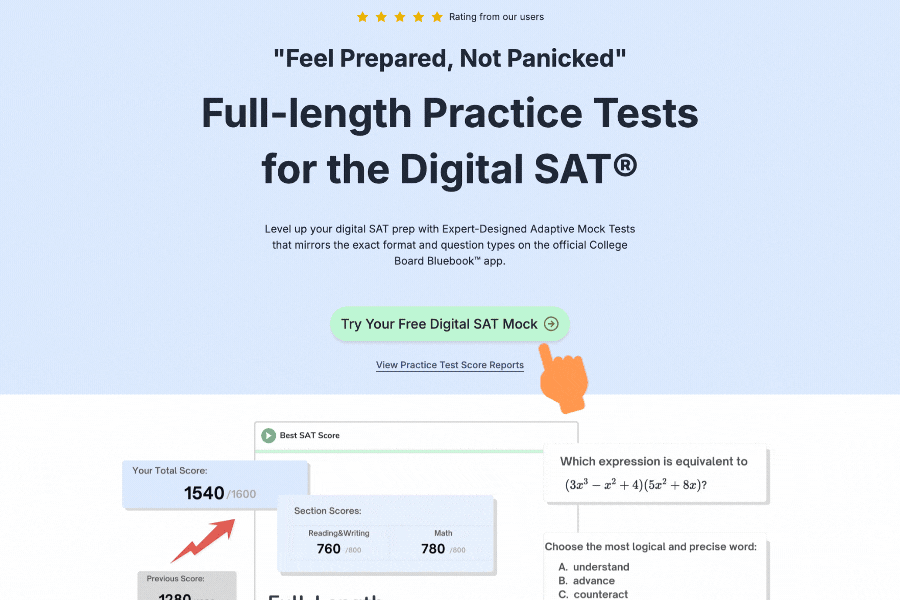Follow this systematic approach to tackle quantitative evidence questions efficiently.
🟠 Step 1: Skim the Graph/Table (5-10 seconds)
➤ Goal: Familiarize yourself with the data's topic, structure and variables-not deep analysis.
➤ What to Look For:
- Title/Labels: Identifies the topic (e.g., "Annual Carbon Emissions by Country").
- Axes/Columns: Units (e.g., "tons CO2") and categories (e.g., years, countries).
- Trends/Patterns: Quick note of highs, lows, or correlations.
Example Table:
| Year | Electric Cars Sold (Thousands) |
|---|
| 2020 | 1,200 |
| 2021 | 1,800 |
| 2022 | 2,600 |
Key Takeaway: Electric car sales increased yearly.
🟠 Step 2: Read the Passage (20-30 seconds)
➤ Focus: Identify the main claim/argument and what data to retrieve.
➤ Case 1: Passage with a Blank
Blank Location: Always at the end, requiring data to complete the text.
Example Passage (Environmental Study):
"A 2022 study examined whether subsidies for electric vehicles (EVs) boosted adoption rates. Researchers compared EV sales in countries with and without subsidies, controlling for median income......The data revealed that ______."
Question Prompt:
"Which choice most effectively uses data from the table to complete the statement?"
Key Clue: The blank needs data information showing how subsidies affected EV sales.
➤ Case 2: Passage Without a Blank
Focus: Link data to support/weaken the argument.
Example Passage (Social Science):
"Some economists argue that raising the minimum wage reduces teen employment......They cite a 10-year study tracking employment rates in states with varying wage policies......."
Question Prompt:
"Which choice best describes data from the graph that weakens this claim?"
Key Clue: Look for data where higher wages didn't reduce teen employment.
🟠 Step 3: Validate the Choices
➤ Goal: Eliminate choices with false data or irrelevant information.
Example Choices (Based on EV Sales Table):
- "EV sales peaked in 2020 at 1.2 million units."
- False: The table shows 1,200 thousand (1.2M), but sales increased after 2020. → Eliminate.
- "EV sales grew by 1,400 thousand units from 2020 to 2022."
- True: 2,600 – 1,200 = 1,400. → Keep.
➤ Rule: Only proceed with factually accurate choices.
🟠 Step 4: Find the Best Evidence (Critical Step!)
➤ Trap: Correct data ≠ Relevant evidence.
➤ How to Test Remaining Choices:
- Revisit the Claim/Argument:
- EV Study Example: The passage asks for data showing subsidies' impact.
- Ask:
- "Does the data directly illustrate/support the conclusion?"
- "Is it the most precise match?"
➤ Final Filter:
- Weak Choice: "EV sales increased over time."
- True but too vague-doesn't link to subsidies.
- Strong Choice: "EV sales rose by 1,400 thousand units after subsidies were introduced."
- Directly connects subsidies to growth.
⚡️ Tip: In real SAT, highlight keywords in the passage (e.g., "supports," "weakens") to stay focused.
